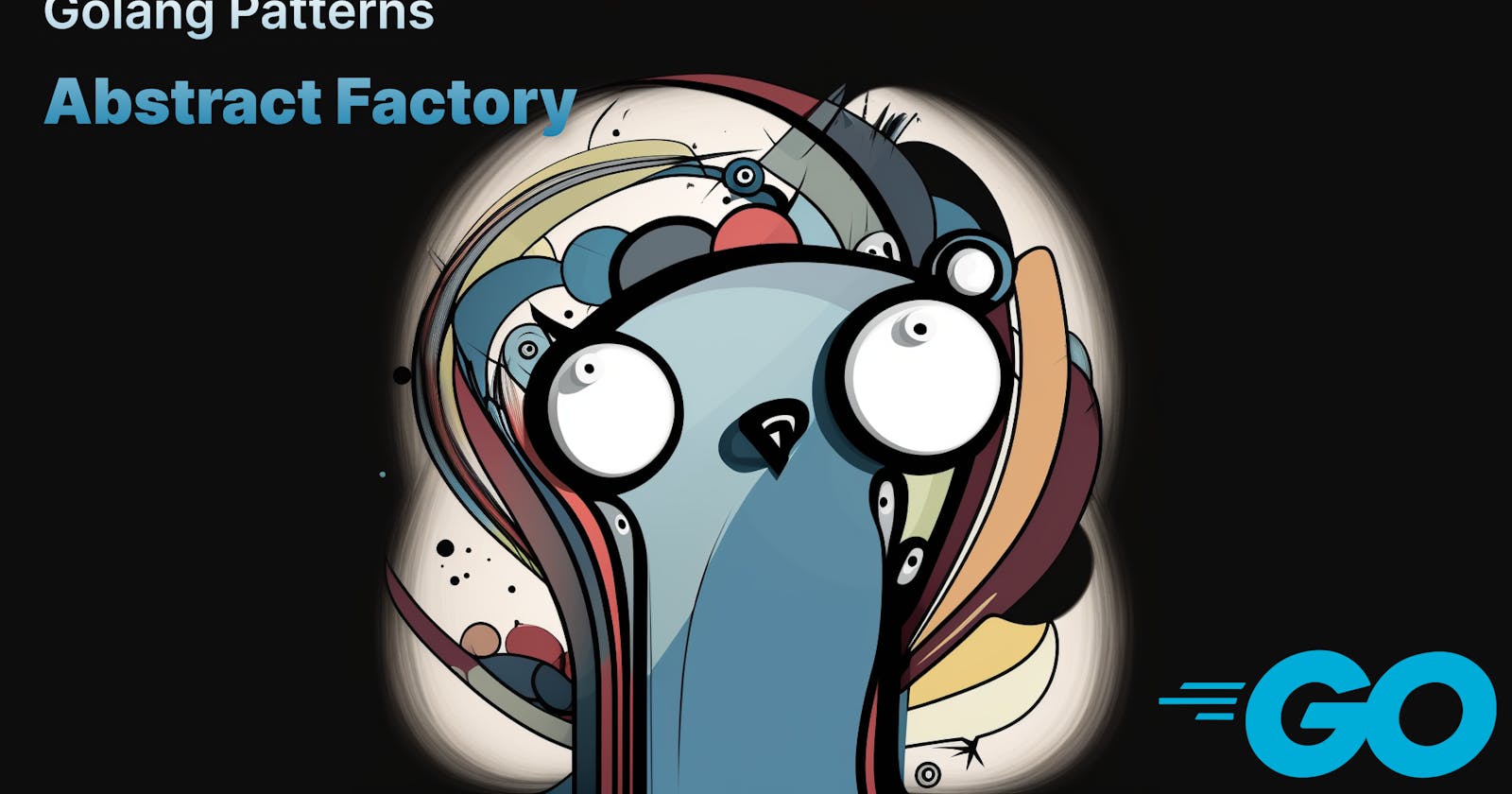The "Gang of Four" design patterns are a set of commonly used software engineering principles that provide solutions to recurring problems in software design. One of these patterns is the Abstract Factory Pattern, which provides an interface for creating families of related objects without specifying their concrete classes. In this article, we will explore how to implement the Abstract Factory pattern in Golang, with examples.
What is the Abstract Factory Pattern?
The Abstract Factory pattern is a creational pattern that provides an interface for creating families of related objects without specifying their concrete classes. In other words, the Abstract Factory pattern defines an abstract class or interface for creating related objects without specifying their exact class types. This allows us to create objects based on a family of related objects, rather than creating individual objects.
Why use the Abstract Factory Pattern?
The Abstract Factory pattern provides a way to create related objects without specifying their concrete classes. This is useful in situations where we want to create objects based on a certain theme or context. For example, if we are building a GUI application, we might want to create a set of related objects, such as windows, buttons, and menus, that all have the same look and feel. By using the Abstract Factory pattern, we can create these objects without specifying their concrete classes, which makes it easy to change the theme or context of our application.
Implementing the Abstract Factory Pattern in Golang
To implement the Abstract Factory pattern in Golang, we first define an interface that defines methods for creating related objects. This interface is called the abstract factory. We then define concrete implementations of this interface, which are called concrete factories. The concrete factories are responsible for creating the actual objects.
Here is an example of how to define the abstract factory interface:
type WidgetFactory interface {
CreateWindow() Window
CreateButton() Button
CreateMenu() Menu
}
In this example, we define an interface called WidgetFactory, which has three methods for creating related objects: CreateWindow, CreateButton, and CreateMenu. These methods return objects of type Window, Button, and Menu, respectively.
We can then define concrete implementations of this interface, such as the WinFactory and MacFactory:
type WinFactory struct{}
func (w *WinFactory) CreateWindow() Window {
return &WinWindow{}
}
func (w *WinFactory) CreateButton() Button {
return &WinButton{}
}
func (w *WinFactory) CreateMenu() Menu {
return &WinMenu{}
}
type MacFactory struct{}
func (m *MacFactory) CreateWindow() Window {
return &MacWindow{}
}
func (m *MacFactory) CreateButton() Button {
return &MacButton{}
}
func (m *MacFactory) CreateMenu() Menu {
return &MacMenu{}
}
In this example, we define two concrete factories, WinFactory and MacFactory, which implement the WidgetFactory interface. Each concrete factory is responsible for creating objects of a specific family. For example, the WinFactory creates objects with a Windows look and feel, while the MacFactory creates objects with a Mac look and feel.
Examples
Let's look at an example of how to use the Abstract Factory pattern in Golang. In this example, we will create a simple GUI application that uses the Abstract Factory pattern to create related objects.
func main() {
var factory WidgetFactory
if runtime.GOOS == "windows" {
factory = &WinFactory{}
} else {
factory = &MacFactory{}
}
window := factory.CreateWindow()
button := factory.CreateButton()
menu := factory.CreateMenu()
// Use the created objects...
}
In this example, we first determine the operating system that the application is running on. We then create a factory object based on the operating system. Finally, we use the factory object to create the related objects, which we can use in our GUI application.
Conclusion
The Abstract Factory pattern provides a way to create related objects without specifying their concrete classes. This is useful in situations where we want to create objects based on a certain theme or context. In Golang, we can implement the Abstract Factory pattern by defining an interface for creating related objects, and then defining concrete implementations of this interface to create the actual objects. By using the Abstract Factory pattern, we can create applications that are more flexible and easier to maintain.
References
- “Design Patterns: Elements of Reusable Object-Oriented Software” by Erich Gamma, John Vlissides, Ralph Johnson, and Richard Helm

